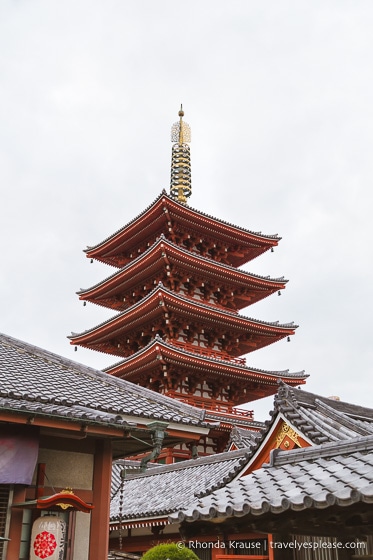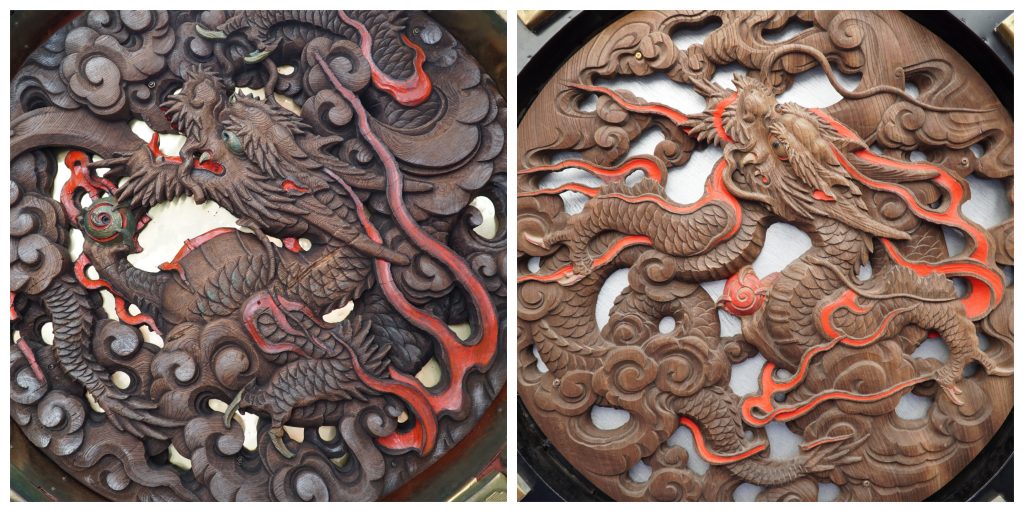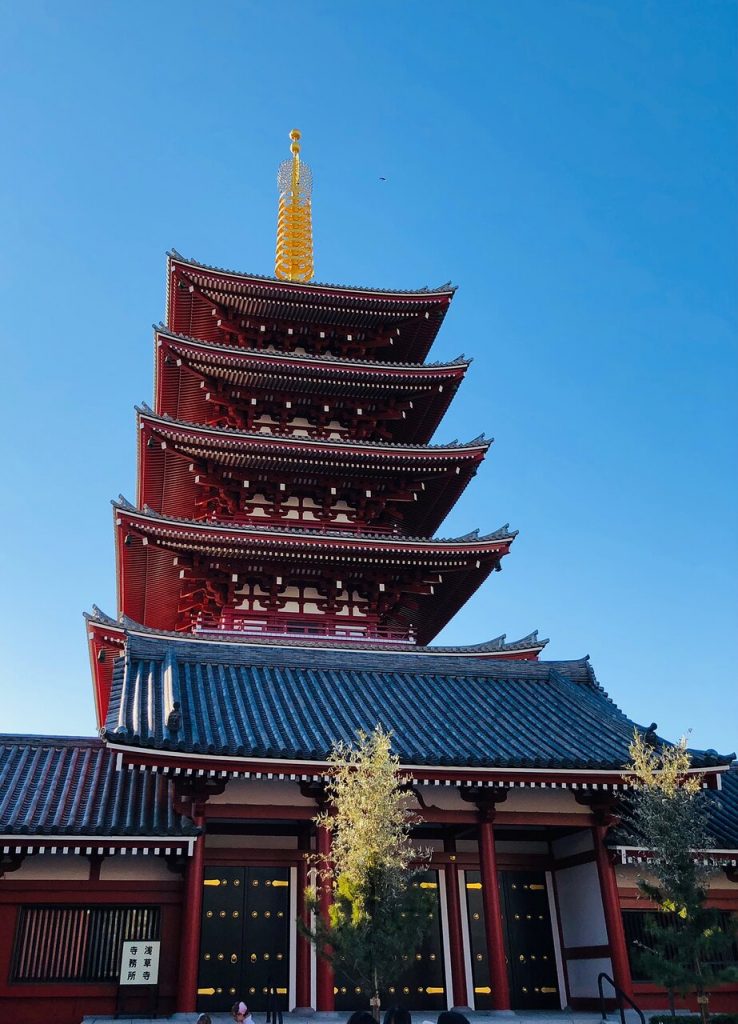The Senso-ji Temple of Asakusa, a temple particularly appreciated by Japanese people is dedicated to the Kannon Buddhist goddess. The latter, a bodhisattva (being who has attained the state of enlightenment but chose to defer their buddha status) is very popular in Japan because she embodies compassion. This explains the number of regular visitors to Japanese temples. Sensoji itself is imposing as it was built in the center of a Buddhist complex that includes entire streets of Asakusa. Whether you visit day or night, a tour of Senso-ji Temple is a great way to experience the traditional side of Tokyo in Japan.
Contents
Senso-ji Temple in Japan: The Ins and Outs of Tokyo’s Oldest Temple
History of Senso-ji Temple (Asakusa Kannon) in Japan
The founding of Senso-ji Temple is rooted in legend, when two fishermen reportedly pulled a gold statue of Kannon, the Buddhist goddess of mercy, from the Sumida River in 628. Even though they put the statue back in the water, it kept returning to them, so a temple was built near the Sumida River in Kannon’s honor.

Senso-ji Temple was completed in 645, growing in size and popularity over the years.
It survived the Great Kanto earthquake of 1923, but didn’t escape damage in World War II. Senso-ji Temple was destroyed in 1945 during the March 10th air raid on Tokyo, but was later rebuilt following the Edo-era layout.
Standing at the gate of Sensoji Temple
There are many ways to visit Sensoji and appreciate the temple and its surrounds, but the standard is to start from the Kaminarimon Gate and move up. The two statues guarding it are of the two rather obscure deities Fujin-sama and Raijin-sama, “god of wind” and “god of thunder and lightning” respectively. The latter (i.e. the left one) has given his name to the gate since another reading of “rai” is “kaminari”. Incidentally, this is what the characters on the big red lantern say: “Kaminarimon” or “thundergate”. When passing through the gate, check under the base of the lantern—you’ll find a dragon hiding there! This is because the official name of Sensoji Temple is “Kinryuzan” or “Golden Dragon Mountain”; the same thing is written on the green plate above the lantern.
At the second gate of Sensoji Temple

After you’ve passed Denpoin, you have almost reached the real thing: the Hozomon, Sensoji Temple’s actual main gate (originally from the early 10th century like the Kaminarimon, but of course rebuilt) and to the left the Goju no To five-storied pagoda (there are very few of them in Tokyo so take lots of pictures!) The pagoda, also from the 10th century is always closed to visitors because, well, it’s a graveyard. It contains memorial tablets of thousands of families and individuals, so you can only see its insides if you can prove that you have family there, so to speak, and even then only during very specific times of the year.
Statues
The Kaminarimon Gate is a popular photo spot with visitors, probably due to it’s size and slightly intimidating protectors. In each side of the gate are placed large protective statues. On the right side Fujin – the god of wind. On the left side Raijin – the god of lightning, thunder and storms. The statues haven’t been around since the beginning – they are thought to have been added to the structure when it was relocated in the 1600’s. They have also suffered under the fires, and the current statues are from 1960, like the gate itself.
On the other side of the gate two smaller statues are installed. These statues depict the Buddhist god Tenryu and the goddess Kinryu. Their names mean Heavenly Dragon and Golden Dragon respectively. Dragons have been closely tied to Chinese and Japanese Buddhism for many years, and they have become symbols of the religion. Dragons not only function as protectors, but are considered symbols of the enlightenment which is so central in Buddhism. That’s why dragons are often depicted holding a mani jewel, the symbol of Buddhas teachings.
Actually, Senso-ji’s correct name is “Kinryū-zan Sensō-ji“, Kinryu-zan meaning “The mountain of the golden Dragon“.
Lantern

In the middle of the Kaminarimon Gate hangs a 4 meter (13 ft) tall traditional lantern called a chochin. On the front of the lantern is written “Kaminarimon”, on the back the gates official name “Furaijinmon” Under the lantern is a beautiful wooden carving of a dragon. The lantern was donated by the Panasonic Corporation after the founder of the company was cured of a disease after traveling to Senso-ji to pray for his health.

